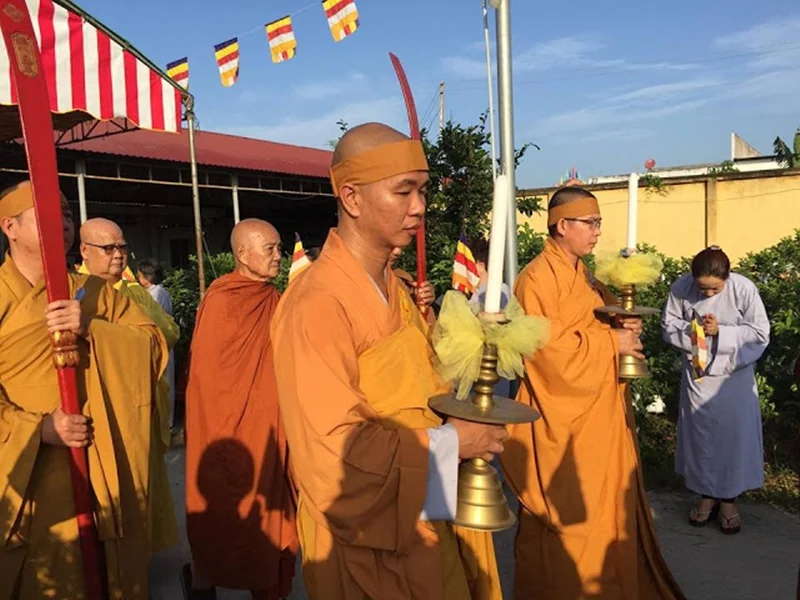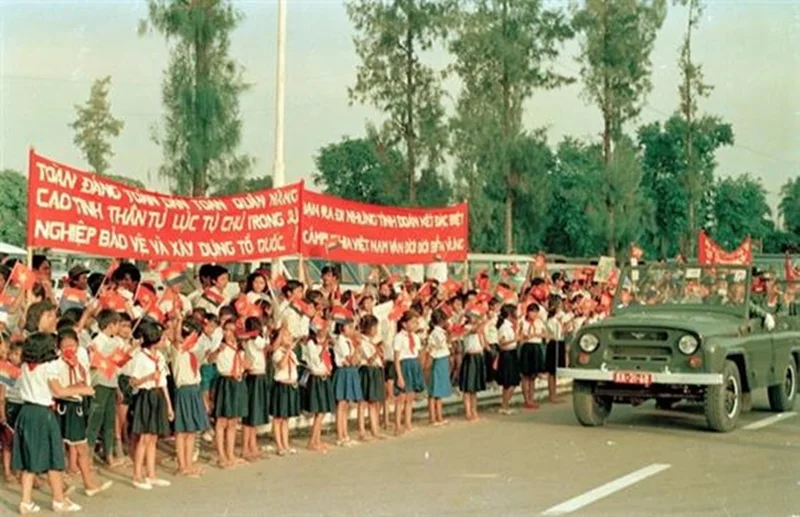- ហេតុអ្វី កម្ពុជាមិនទទួល ជនរស់នៅលើទឹក តាមដងទន្លេ ព្រែក បឹងបួរនៅកម្ពុជា?
- ហេតុអ្វី បានជា ប្រទេសវៀតណាម ប្រកាសថា ជនជាតិ វៀតណាមមាន ៨០០,០០០ នាក់កំពុងរស់នៅកម្ពុជា តែមិនទទួលយក ជនទាំងនោះទៅវៀតណាមវិញ? ខណៈកម្ពុជា បានបណ្តេញចេញដោយបង្ខំ នៅសហគម វៀតណាមតាមទូក នៅម្តុំ ស្ពានច្បារអំពៅ?
- ហេតុអ្វី ប្រទេសវៀតណាមទារ សិទ្ធិ ជនភៀសខ្លួន សម្រាប់ប្រជាជនទាំងនោះ ឪ្យបន្តរស់នៅកម្ពុជា ទោះជា លើទឹក ឬ លើដី?
- ហេតុអ្វី កម្ពុជា មិនបណ្តេញចេញ ក្រោយពី មានព្រឹត្តិ យួន ចាមម៉ុង តាញ៉ា ចុះហត្ថលេខាកាត់ដី ០៤ ខេត្ត ជាមួយ គណបក្ស សង្រ្គោះជាតិ?
- ហេតុអ្វី សូម្បី ជនជាតិវៀតណាម ក៍មិនអាចចូលសញ្ជាតិ វៀតណាម បាន?
- តើជន រស់នៅលើទឹក តំបន់ជាសំណង់បែប អាណាធិប្បតេយ្យទាំងនេះជានណា? ជា ចាម ឬ ជា អណ្ណាម?
 យើងតាមការវិភាគ មូលហេតុដែលវៀតណាម មិនទទួលយកដោយសារ៖ ឆ្នាំ ១៩៥០ ដល់ ១៩៦៣ ស្ថិតក្រោមការដឹកនាំរបស់ វៀតណាមខាងត្បូង គឺ ង៉ោ ឌិន យៀប និង ង៉ោឌុន យូ ជាប្អូន Ngo Dinh Nhu – Ngo Dinh Diem ១៩៥០ ដល់ ឆ្នាំ ១៩៦៣ កាន់កាតូលិក កាប់សម្លាប់ប្រជាជន ដុតបំផ្លាញវត្តអារ៉ាម មិនផ្តល់អាវុធឲ្យ រឹបអូសដីធ្លី..ធ្វើសង្រ្គាមប្រឆាំង វៀតកុង Viet Cong ដោយសារ ពួក វៀតកុង កាន់ពុទ្ធសាសនា។ តើអ្នកណាខ្លះ កាន់ពុទ្ធសាសនានៅវៀតណាម គឺ ជនជាតិ ខ្មែរនិង រដ្ឋ ពោធិនគរ Po Nagar របស់ ចាម។ ខ្មែរទទួល ចាម ក៍ពិបាក ! ទទួល វៀតណាម ក៍ពិបាក សម្រាប់ វៀតណាម ក៍ពិបាកដូចគ្នា ដោយសារតែ មិនមែន ជនជាតិ វៀតណាម។
យើងតាមការវិភាគ មូលហេតុដែលវៀតណាម មិនទទួលយកដោយសារ៖ ឆ្នាំ ១៩៥០ ដល់ ១៩៦៣ ស្ថិតក្រោមការដឹកនាំរបស់ វៀតណាមខាងត្បូង គឺ ង៉ោ ឌិន យៀប និង ង៉ោឌុន យូ ជាប្អូន Ngo Dinh Nhu – Ngo Dinh Diem ១៩៥០ ដល់ ឆ្នាំ ១៩៦៣ កាន់កាតូលិក កាប់សម្លាប់ប្រជាជន ដុតបំផ្លាញវត្តអារ៉ាម មិនផ្តល់អាវុធឲ្យ រឹបអូសដីធ្លី..ធ្វើសង្រ្គាមប្រឆាំង វៀតកុង Viet Cong ដោយសារ ពួក វៀតកុង កាន់ពុទ្ធសាសនា។ តើអ្នកណាខ្លះ កាន់ពុទ្ធសាសនានៅវៀតណាម គឺ ជនជាតិ ខ្មែរនិង រដ្ឋ ពោធិនគរ Po Nagar របស់ ចាម។ ខ្មែរទទួល ចាម ក៍ពិបាក ! ទទួល វៀតណាម ក៍ពិបាក សម្រាប់ វៀតណាម ក៍ពិបាកដូចគ្នា ដោយសារតែ មិនមែន ជនជាតិ វៀតណាម។- ប្រជាជនរស់នៅលើទឹកទាំងនេះ មួយចំនួន កាន់ពុទ្ធសាសនា៖ បើយើងតាមស្ថិតិសាសនានៅវៀតណាមមាន ០៧ សាសនាធំៗ ប់ើ ទោះជាកម្ពុជា កាន់សាសនាព្រះពុទ្ធដូចគ្នា តែ មិនត្រូវជាមួយ ព្រះពុទ្ធសាសនារបស់់ ជនចំណាកស្រុកទាំងនេះ បានន័យថា ពួកគេ មិនមែនជា ខ្មែរ គឺប្រាកដ ជាជនជាតិ ចាម កាន់ពុទ្ធសាសនា។
- ប្រទេសវៀតណាម តាមតួរលេខនេះ ឃើញថា ប្រឆាំង ឥស្លាម ព្រោះសព្វថ្ងៃមាន ឥស្លាមសល់តែជាង ១០ ម៉ឺននាក់ ប៉ុណ្ណោះបានន័យថា ជនជាតិ ចាម ចំប៉ា/ចម្ប៉ា ត្រូវដូរ សាសនា មកជា ព្រះពុទ្ធ ឬ ជាគ្រឹស្តសាសនា ទើបអាចរសនៅ វៀតណាម។
- បារាំង គាំទ្រ Ngo Dinh Diem ដោយប្រឆាំង អ្នកកាន់ ពុទ្ធសាសនា ក្រោយឆ្នាំ ១៩៦៣ ចារកម្មអាមេរិកធ្វើប្រហារ សម្លាប់ Ngo Dinh Diem ដែលកាន់ ប្រូតេស្តង់។ ដូច្នេះ ជនជាតិ ចាម ឬ ខ្មែរ ដែលកាន់ពុទ្ធសាសនា ត្រូវភៀសខ្លួន មកកម្ពុជា ឆ្នាំ ១៩៥០ ដល់ឆ្នាំ ១៩៧០ គេចចេញពី ប្រតិបត្តិការទំលាក់គ្រាប់បែក របស់អាមេរិក ដែលតាមកំទេច ពួក វៀតកុង និង ខ្មែរវៀតមិញ។
- ឆ្នាំ ១៩៧០ លន់ នល់ ធ្វើរដ្ឋប្រហារ ក្រោយមក សុំជំនួយពី វៀតណាមខាងត្បូង និង អាមេរិក ដោយសារគាត់ កាន់សាសនា គ្រឹស្តដែរ ដូច្នេះ LON NOL បណ្តេញចេញនៅ ជនជាតិ វៀតណាម ដែលកាន់ សាសនា ព្រះពុទ្ធតិចតួច ចំណែក ឥស្លាម មិនបណ្តេញទេ ព្រោះ មានរដ្ឋាភិបាល របស់ ចាម ឡេះ កូសឹម ជួយការពារ។
- ឆ្នាំ ១៩៧៥ របប ខ្មែរក្រហម ប្រកាន់ នយោបាយ ទម្មិល ឥតសាសនា សម្រាប់ ចាមអស់ជាច្រើន
- ឆ្នាំ ១៩៧៩ សាសនា ព្រះពុទ្ធ និង សាសនា ឥស្លាម រស់ឡើងវិញ នៅកម្ពុជា ដូច្នេះ ចាម កាន់ ពុទ្ធសាសនា ធ្វើដំណើរចូលមកកម្ពុជាយ៉ាងគំហុក បង្កើតជា វិបត្តិ ជនគ្មានរដ្ឋ Stateless People
- សាសនាដើមជនជាតិវៀតណាម, Folk Religion មាន ៧៤%
- ពុទ្ធសាសនា Buddhism ចំនួន ០៧ លាននាក់ (១៥%)
- រូម៉ាង់ កាតូលិកសាសនា Roman Catholic មាន ៧% ( ៥ លាននាក់)
- ប្រូតេស្តង់ សាសនា Protestantism
- កៅដាយសាសនា Caodaism មាន ១% ( ២,៥ លាននាក់)
- Hoahaoism សាសនា
- Islamism សាសនាឥស្លាម មាន ១០០,០០០ នាក់ (១%)
Campuchia lùi thời gian di dời người Việt ở Biển HồCambodian authorities allowed hundreds of Vietnamese households living in Tonle Sap to not have to relocate until July.The government of the central province of Kampong Chhnang, Cambodia has just issued a statement saying that 750 Vietnamese households living in Bien Ho will not have to be relocated until July. Before that, more than 3,000 families had volunteered to move to the resettlement area. settle in higher ground, Phnom Penh Post on January 3 reported.
Governor Chhour Chandoeun said the local government made this decision after considering the impact of resettlement on the livelihoods of families.
"We always think of people's livelihood. In this case, they make a living by raising fish in cages, if they move their fish cages to high ground, the fish will all die. So for the time being, we let them keep their homes and fish farms," the official said.
Mr. Chandoeun added that authorities are preparing for the relocation of these households in the next 6 months. "They need to settle down on land. They can continue to raise fish but can't live long-term in this area."
Depuy Governor Sun Sovannarith said the process of relocating families living in Tonle Sap will be divided into two phases. In the first phase, the government will build suitable infrastructure for resettled families and those who do not make a living from fish farming.
In resettled areas, local authorities cooperate with NGOs to build roads, schools, health centers, clean water systems and power stations.
"In the second phase, the remaining families who own fish farms will move to the mainland in July but their fish cages will remain as they are," he said. During this period, the government will work with private companies to turn fish farms into tourist attractions.The Tonle Sap Lake in Cambodia is the largest freshwater lake in Southeast Asia. With a special terrain and a hydrological system that changes streams twice a year, Bien Ho has a diverse and rich ecosystem, providing 75% of freshwater fish production for Cambodia.
According to the Cambodian Overseas Vietnamese Association, there are more than 1,500 Vietnamese-American households living in floating villages on the lakeside. The New York Times quoted independent researchers as saying that between 400,000 and 1 million people live in the Tonle Sap area and are not recognized as Cambodian citizens.
During a meeting in November 2018, Cambodian Deputy Prime Minister and Minister of Foreign Affairs and International Cooperation Prak Sokhonn and Vietnamese Deputy Prime Minister Pham Binh Minh agreed to strengthen coordination in handling legal documents for people of origin. Vietnamese in Cambodia as well as relocation of floating houses of households in Bien Ho area.
Floating Villages on Cambodia's Tonle Sap Are Being Scuttled
Thousands of ethnic Vietnamese living in the floating villages that dot the Tonle Sap are being repatriated to Vietnam as their livelihood drains away and they can’t come up with the documentation needed to stay in Cambodia, RFA’s Khmer Service has learned.
While hard numbers are difficult to come by, VietnamNet reported that 5,000 ethnic Vietnamese families who had been living in the floating villages are now living in Vietnam.
A group of Vietnamese still living in the floating village in Kampong Chhnang’s Svay Chrum Commune told RFA that while they were born in Cambodia they are leaving because environmental damage to the Tonle Sap has decimated the fishing and they can’t prove their residency in Cambodia.
Nguyen Yaing An told RFA that while life is tough enough, Cambodian authorities have tried to move them from place to place, and lately the authorities attempted to convince them buy land to live near what is the largest fresh water lake in Southeast Asia.
The land offer appears genuine, but it is costly and the plots also lack titles or other documentation that prove the new owners have the right to stay.
“The land they wanted to sell to us, came with no documents and costs 1,000 to 2,000 U.S. dollars,” he said. “We do not have the money to buy them. We do not even have enough rice to cook.”
Nguyen Yaing An told RFA that if the situation becomes more difficult, his family will drag their floating house to Vietnam.
Another Vietnamese resident on the lake, who spoke on condition of anonymity, told RFA that about 60 Vietnamese families from the Svay Chrum floating village plan to leave for Vietnam in October.
“They told us to live here temporarily, that means that they will chase us away again,” the Vietnamese said. “If they move us this time to live off the lake, we do not have the money to buy land.”
For Sale signs and empty houses
Nearly 1,500 floating houses owned by mostly by ethnic Vietnamese villagers from Psar Chhnang commune were moved to Svay Chum Commune in late 2015. Many of those houses are vacant, or they have “for sale” signs posted on them.
Tot Kim Sroy, the Minorities Rights Organization (MIRO) coordinating official in Kampong Chhnang, told RFA that the poverty among the Vietnamese living on the lake is epidemic, but the biggest challenge is the lack of fish.
The Tonlé Sap River connects the lake to the Mekong River to form the central part of a complex hydrological system in the Cambodian floodplain. It covers a myriad of natural and agricultural habitats that the Mekong replenishes with water and sediments annually.
The natural seasonal inflow and outflow of water has been hammered by a combination of global warming, overfishing and illegal fishing, the mostly illegal clearance of surrounding forest lands and the Asian dam-building boom that threatens the entire Mekong River system.
Most threatened lake
The Global Nature Fund, based in Radolfzell, Germany, named the Tonle Sap the world’s most threatened lake in 2016.
While the lake is under stress, ethnic Vietnamese living off the Tonle Sap also fear the Cambodian authorities. Animosity between Vietnam and Cambodia goes back centuries, but it was heightened by the Vietnamese war that ousted the Khmer Rouge and paved the way for long-ruling Prime Minister Hun Sen’s ascension to power.
Accusations over the demarcation of the border between Vietnam and Cambodia has become a prominent feature in Cambodian politics as Hun Sen’s opponents have attempted to paint the strong man as tool of the Vietnamese.
“We could not get the actual number of how many families are living in this area because they have been hiding in fear for their safety,” Tot Kim Sroy told RFA.
Cambodian Interior Ministry’s spokesperson Khiev Sopheak told RFA that he did not know how many Vietnamese families with legal documents have returned to Vietnam.
“Right after the liberation in 1979, our east border line was not safeguarded seriously,” he said. “I hope that Vietnamese friends will understand that the Cambodian government with the ruling CPP will fully implement the country’s immigration law.”
Stateless Cambodians Become Vietnamese Citizens
The U.N. refugee agency said Tuesday that the Vietnamese government has taken groundbreaking steps to end statelessness for thousands of former Cambodian refugees. The UNHCR said more than 2,000 refugees will receive Vietnamese citizenship by the end of the year.
The U.N. refugee agency says 2,357 victims of Cambodia's Pol Pot dictatorship have been living in limbo in Vietnam for more than three decades.
UNHCR spokesman Adrian Edwards says this situation of uncertainty now is over for 287 former refugees. Last Friday, he says, they received their citizenship certificates at a ceremony at the Department of Justice in Ho Chi Minh City.
Edwards says it was the culmination of five years of work between the UNHCR and the Vietnamese government. He says all of the Cambodians speak Vietnamese and that they are fully integrated in the society.
"They now acquire all rights of citizenship. In Vietnam, this means an all-important family registration book that governs citizens' interactions with the government, as well as a government I.D. card. With these two documents, the new citizens can buy houses, attend universities, get health and pension insurance, and do other simple things they were not able to do before such as have ownership of a motorbike," he said.
Edwards notes that by the end of the year, the remaining 2,070 former Cambodian refugees also will have their Vietnamese citizenship.
He praises other important steps Vietnam has taken in ending and preventing statelessness. "Last year, it enacted a law to plug gaps that caused thousands of Vietnamese women who married and then divorced foreign men to become stateless. This situation has now been largely rectified, and most of the women and their children are getting citizenship," he said.
Combating statelessness is one of the UNHCR's top priorities. The agency says the 12 million people who are stateless worldwide have no rights. They live in a virtual twilight zone, stripped of the ability to move freely or to participate in the normal social benefits citizens of a country take for granted.












































































No comments:
Post a Comment